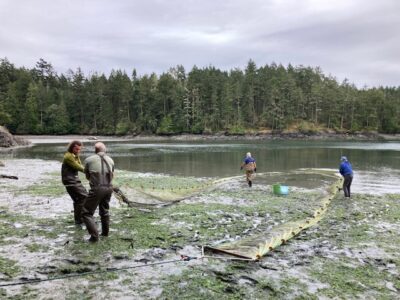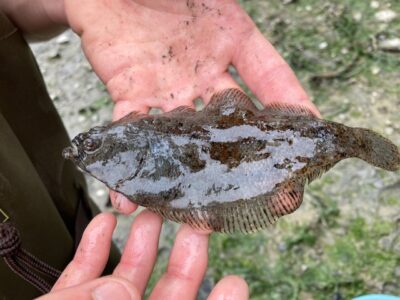
Pursing the seine net at low tide
Under the guidance of fisheries biologist Dr. Tina Echeverria, a small group of Shaw islanders recently experienced the process of nearshore seining at the Preservation Trust’s Marilyn and Fred Ellis Preserve. The shoreline at this site is designated as a marine sanctuary, with access restricted to authorized research and education.
After Tina explained the ecological significance of local intertidal areas—particularly in providing forage-fish habitat and essential nursery sites for juvenile salmonids—the seine net was deployed from a small boat just offshore. Using long lines, helpers worked together to gently pull and gather the net into a purse where an array of fish, crab, worms, and other intertidal critters were observed, then released.

One of several flatfish that were caught and released
Along with diverse sculpins and flatfish, the group noted an abundance of sand lance. This was a pleasant surprise, as these are a particular favorite of young salmon.
This seining demonstration was not a formal inventory or survey, yet it gave us a meaningful glimpse of one measure of intertidal health that would be impossible to observe in any other way.
Even with a small number of people using great care, sampling at a site with this type of fragile clay and silt substrate causes disturbance to the intertidal ecosystem. Mindful of these impacts, we are not likely to do it again anytime soon. In the meantime, we are pleased to have had the opportunity to observe some nearshore underwater inhabitants, and to know that important forage fish species are thriving at the Ellis Preserve.
